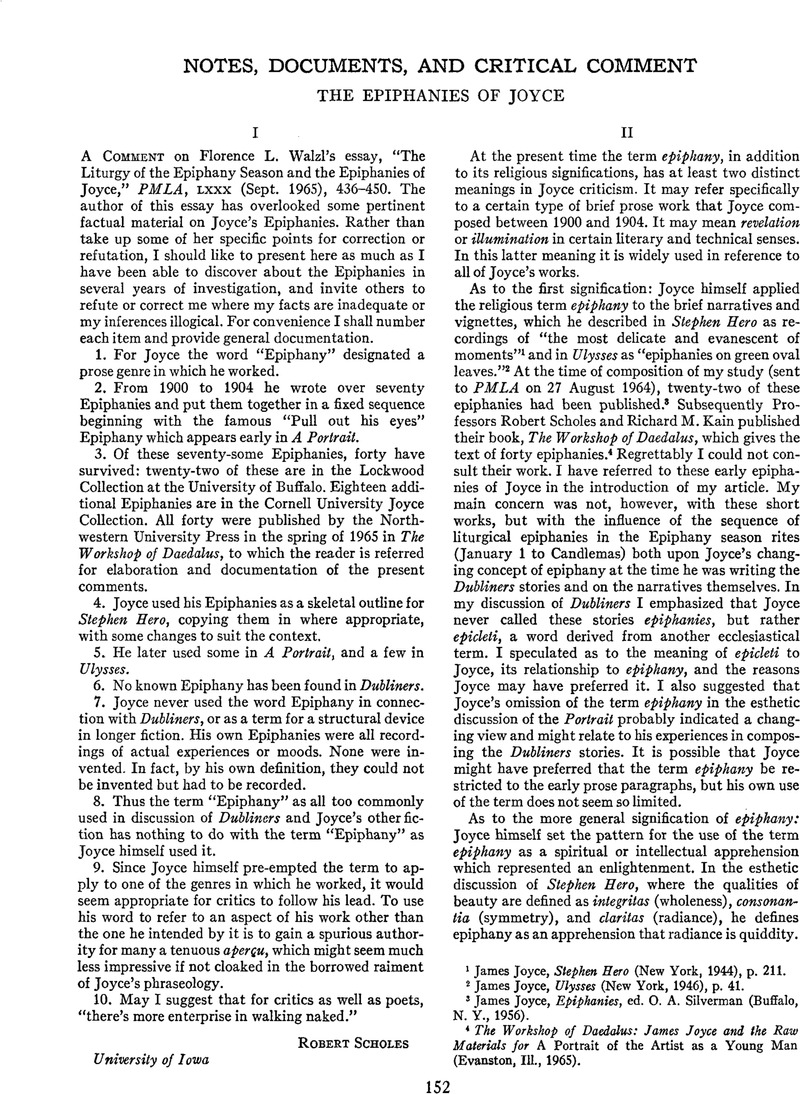Published online by Cambridge University Press: 02 December 2020

1 James Joyce, Stephen Hero (New York, 1944), p. 211.
2 James Joyce, Ulysses (New York, 1946), p. 41.
3 James Joyce, Epiphanies, ed. O. A. Silverman (Buffalo, N. Y., 1956).
4 The Workshop of Daedalus: James Joyce and the Raw Materials for A Portrait of the Artist as a Young Man (Evanston, Ill., 1965).
5 Stephen Hero, p. 213.
6 James Joyce, A Portrait of the Artist as a Young Man, Compass Edition (New York, 1956), p. 213.
7 Irene Hendry [Chayes], “Joyce's Epiphanies,” in James Joyce: Two Decades of Criticism, ed. Seon Givens (New York, 1948), pp. 27–46.
8 See Maurice Beebe, “Joyce and Aquinas: The Theory of Aesthetics,” PQ, xxxvi (January 1957), 30–34; Haskell Block, “The Critical Theory of James Joyce,” J A AC, vii (March 1950), 181–184; Hugh Kenner, Dublin's Joyce (Bloomington, Ind., 1956), pp. 144–154; Geddes MacGregor, “Artistic Theory in Joyce,” Life and Letters, liv (July 1947), 21–22; and William T. Noon, Joyce and Aquinas (New Haven, 1957), pp. 60–85.
9 S. L. Goldberg, The Classical Temper: A Study of James Joyce's Ulysses (London, 1961), p. 312. See pp. 41–65, 78, 214–215, and 269–270.
10 A. D. Hope, “The Esthetic Theory of James Joyce,” Australasian Journal of Psychology and Philosophy, xxi (December 1943), 93–114; Thomas E. Connolly, “Joyce's Aesthetic Theory,” UKCR, xxiii (October 1956), 47–50; and William York Tindall, James Joyce: Bis Way of Interpreting the Modern World (New York, 1950), pp. 120–121; and A Reader's Guide to James Joyce (New York, 1959), pp. 10–12.
11 Theodore Spencer, “Introduction” to Stephen Eero, pp. 16–17; Harry Levin, James Joyce: A Critical Introduction (Norfolk, Conn., 1941), p. 29; and Tindall, Guide, p. 11.